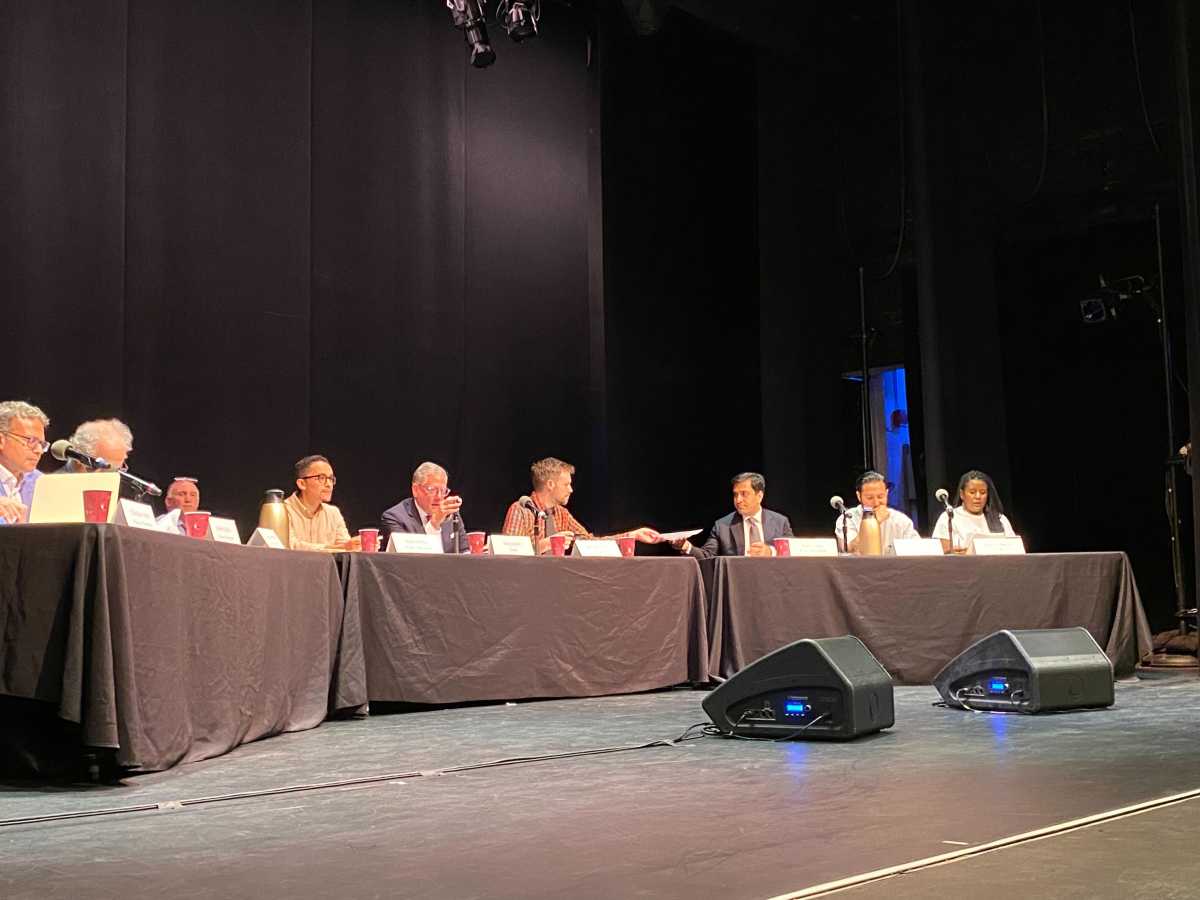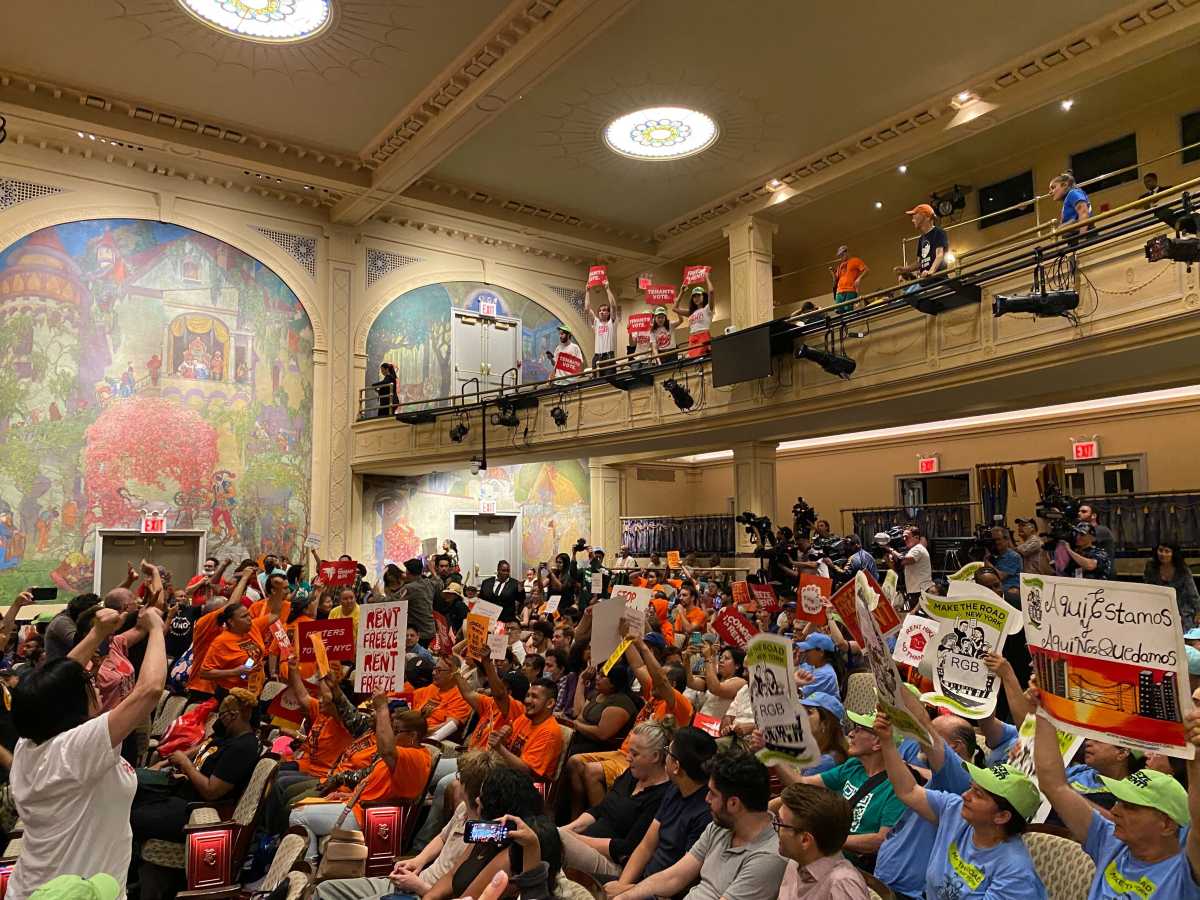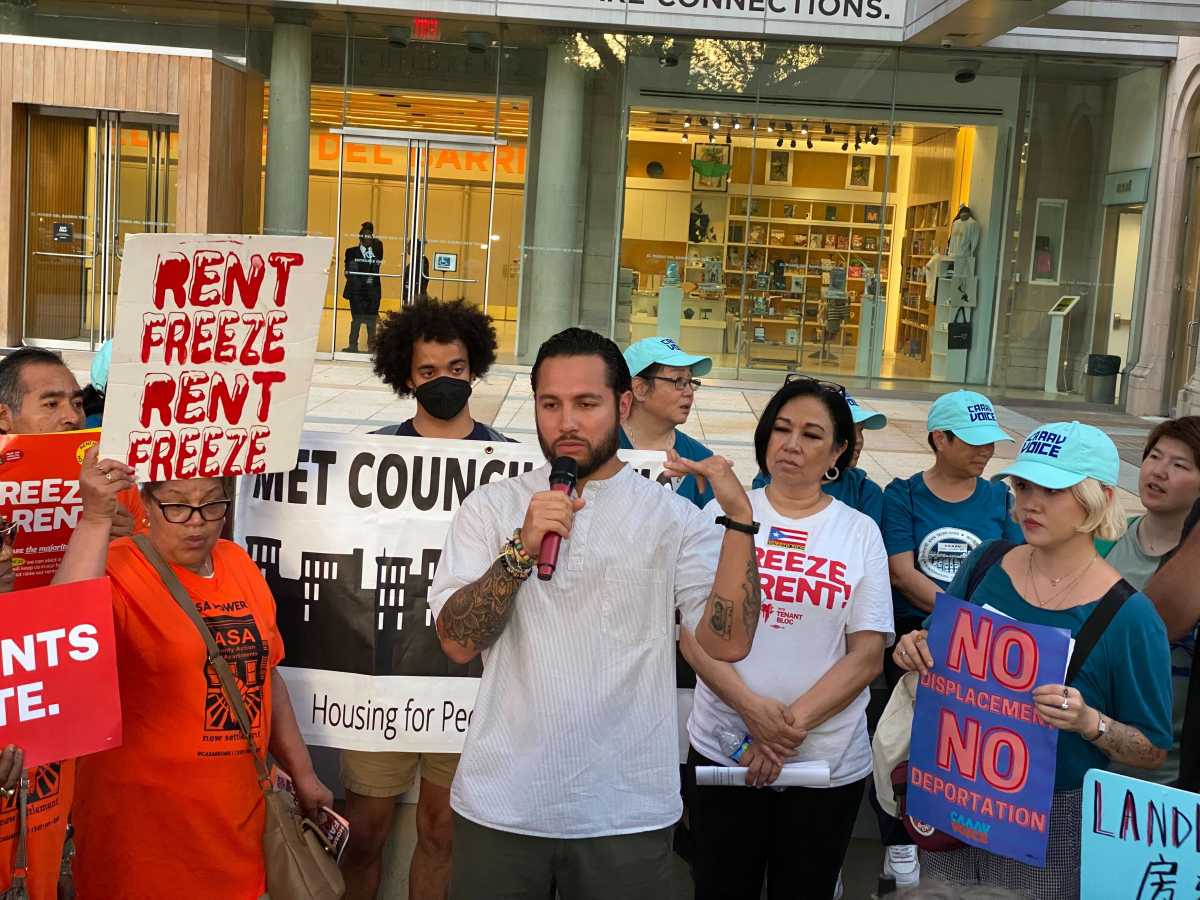The Rent Guidelines Board voted Monday evening to increase the rent for the city’s nearly one million rent-stabilized apartments, a decision that appeased neither smaller landlords nor tenant activists.
Stabilized renters with one-year leases can expect a 3% hike in their rents, while those with two-year leases will see rents climb 4.5%.
In a 5-4 vote, the nine-member board—composed of two landlord representatives, two tenant representatives, and five public members appointed by the mayor—approved the increases, which will take effect for leases issued or renewed on Oct. 1, 2025.
Ahead of the June 30 public meeting at El Museo del Barrio in East Harlem, the board was considering increases between 1.75% to 4.75% on new one-year leases and 3.75% to 7.75% on new two-year leases.
The range for one-year leases was approved on April 30, but the board, in a rare move, revoted on the range for two-year leases on May 27, reducing it from 4.75%–7.75% to 3.75%–7.75%.
Board Chair Doug Apple said at the time that the rare re-vote on two-year leases was warranted based on testimony on the impact of potential rent increases on tenants, “whose incomes are not keeping pace with the rising cost of living.”
Tenant board member Adán Soltren criticized Apple and the fellow RGB for “ignoring the affordability” testimony heard at public hearings since March and for raising the rent by some 12% over the last four years.
Chants of freeze the rent erupted as the board members took the stage, followed by booze and jeers for the duration of the proceedings. Only the tenant members, Genesis Aquino and Soltren, were welcomed favorably and allowed to speak uninterrupted by the crowd of tenant activists who packed the hall.
Calls for rent freeze

As the city’s affordability crisis worsens, tenant advocates have been pushing the Rent Guidelines Board to implement a rent freeze for regulated apartments. During the primary season, the measure was a major talking point, with half of the Democratic mayoral candidates advocating for the measure in some capacity.
A rent freeze was is a core campaign pledge of Queens Assembly Member Zohran Mamdani, who clinched the Democratic nomination last week. If elected in November, he has pledged to appoint more tenant-friendly board members to uphold the pledge.
In a statement before the vote, Mamdani said that “change was coming.”
“Even while landlord incomes have increased by 12%, this Mayor is once again placating real estate donors rather than serving the working people he once claimed to champion,” he said . “Make no mistake: even a supposedly modest rent hike in the midst of a cost-of-living crisis will push New Yorkers out of their homes. But as voters showed last Tuesday, New Yorkers are ready for a city government that lowers costs instead of padding real estate profits.”
Rent-stabilized units typically include most buildings with more than six apartments built before 1974, along with newer affordable housing developments that receive tax incentives and city funding.
According to a 2019 rent law, landlords are not allowed to increase rents on these units without approval from the RGB—a city agency tasked with overseeing rent-stabilized housing. Each year, the RGB determines allowable rent adjustments following public hearings, and has been holding regular hearings since March of this year.
Ahead of Monday evening’s vote, Mayor Eric Adams urged board members to adopt the lowest possible proposed increases, which “balance affordability with protecting the quality of housing for the millions of New Yorkers who live in a rent-stabilized home.”
“One of the largest costs on kitchen tables each month is rent, and right now, New Yorkers are feeling the squeeze of a historically tight housing market with a 1.4% vacancy rate,” Mayor Adams said.
Adams added that calls to freeze the rent were short-sighted and risk worsening already deteriorating housing conditions, putting tenants’ health and safety in harm’s way.
“This would be disastrous for the quality of rent-stabilized homes, making it impossible for owners, particularly small property owners, to put money back into their buildings, make repairs, and maintain their buildings,” he said.

Increases fall short
Ann Korchak, president of Small Property Owners of New York, told amNewYork ahead of the vote that her members were already disappointed with the RGB because their agreed ranges fell short of covering a 6.3% spike in operating costs reported in the board’s own Price Index of Operating Costs report.
Korchak, who represents hundreds of small landlords citywide, said her members face mounting financial pressure from surging property taxes and insurance premiums, with some seeing increases as high as 38% for commercial policies and 300% for liability coverage. In one instance, her own insurance carrier exited the market, forcing a last-minute switch that required paying a three-year premium upfront.
“These are big numbers,” she said, noting that owners sometimes delay paying contractors or other bills due to cash flow issues. “It’s not cheap to maintain a 130-year-old building.”
Korchak warned that rent freezes, like those implemented during the de Blasio administration and proposed by Mamdani, would be “unsustainable” without meaningful financial assistance for vulnerable tenants. Without relief, she argued, more buildings will fall into financial distress, compounding the crisis in the rent-stabilized housing market.
“Destabilizing us isn’t better for anybody,” she said. “We’re all in the same ecosystem.”
In testimony to the RGB in the run up to Monday night’s vote, on of the city’s leading fiscal watchdog sounded the alarm over the deteriorating state of the city’s rent-stabilized housing stock — warning RGB that if rents did not keep pace with inflation, the city risks a spiraling maintenance crisis akin to the one plaguing NYCHA.
Seething after the vote
After the vote, Brooklyn Assembly Member Marcela Mitaynes told amNewYork the move was a “disappointment” that fails to reflect the ongoing struggles of working-class New Yorkers.
“What they’re asking for is a rent freeze. We’ve asked for it before. They need it now,” Mitaynes said. “They don’t realize that folks are still struggling through the pandemic, struggling to get work. Everything is going up.”
Mitaynes, who represents Red Hook, Sunset Park and northern Bay Ridge, pointed to worsening conditions in rent-stabilized buildings in her district, including the loss of basic services and building maintenance.
“In my district, all of a sudden buildings don’t have landlords … buildings don’t have Supers,” she said. “There’s nobody responsible there.”
Mitaynes argued the rent hikes contribute to a long-term erosion of the rent stabilization system and threaten community stability.
“We started off at close to over 3 million [units], and now we’re dwindled down to less than a million,” she said. “Not only is this making households unstable, but this is also creating instability in our communities. … As elected officials, we should be listening more and seeing our job and our responsibility is to make their life better through legislation. And I don’t see that happening.”

Soltren rallied with outside the venue, alongside members of the NYS Tenant Bloc, criticizing the public members of the board for viewing the issue through an academic lens, disconnected from the lived experience of renters.
“A lot of the public members …they wind up looking at people as numbers,” he said. “The reality is, we are not numbers, and we have difficulties and responsibilities.”
He said many members are “entrenched in the capitalist society” and believe property owners “have a right to exploit these business models,” adding that they often fail to consider how their decisions “actually affect people.”
Tenant groups had presented data showing landlord income was up 12% and that rent burdens in the Bronx reach as high as 50%. Soltren said this information was largely dismissed.
“The easy answer is: they kind of ignore it,” he said.
Despite the board’s vote, Soltren said he believes tenants made an impact.
“I think they felt it,” he said. “I don’t think they know what’s coming.”
Members explain their votes
Christina Smyth and Robert Ehrlich were the “owner members” of the RGB who voted against the rent increase.
Ehlrich said that despite the claims of tenant advocates, and many of those who spoke at public hearings, net operating income (NOI) is not profit.
“In the past 12 years the RGB has made a clear shift towards a systemic defunding of buildings,” he said. “They have adjusted rents at an average of 1% below inflation and the result has been a decline NOI in older buildings.”
“If this board is going to permanently adjust rents below inflation going forward, there is only going to be one outcome: systemic failure of the majority of rent stabilized housing stock,” he said.
He added that rent hikes approved by the RGB under the proposed ranges would save the buildings in distress, “that adjustment has already been spent.”
“From a building’s operation standpoint, rent adjustments below inflation are rollbacks,” he added.
Smyth echoed Ehlrich’s sentiment, saying that adjusting rents below inflation is “dooming buildings to failure.”
“At a bare minimum, inflation needs to be the starting point for discussions on rent adjustments. This year, inflation is 4%, it should be the starting point for rent adjustments on one-year leases,” she said.
She continued that rent-stabilized buildings are being defunded term after term, and it’s on the watch of elected officials. Smyth continued that the RGB is put in a position each year to the “utter failures of state elected officials and city government to address the high cost of housing and the abject lack of supply.”
She also leveled her criticism at the elected officials advocating for a rent freeze, saying the same politicians have repeatedly failed to address property tax reform.”
“Taxes and insurance increases year of year are devastating older rent stabilized buildings,” she said, along with high water, sewage and electricity costs.
Public member Alexander Armlovich said Monday’s guidelines represented a “difficult compromise” between the competing testimonies the board received. The crowd’s jeers prompted him to cut his testimony short and instead opt to submit it after the hearing.



